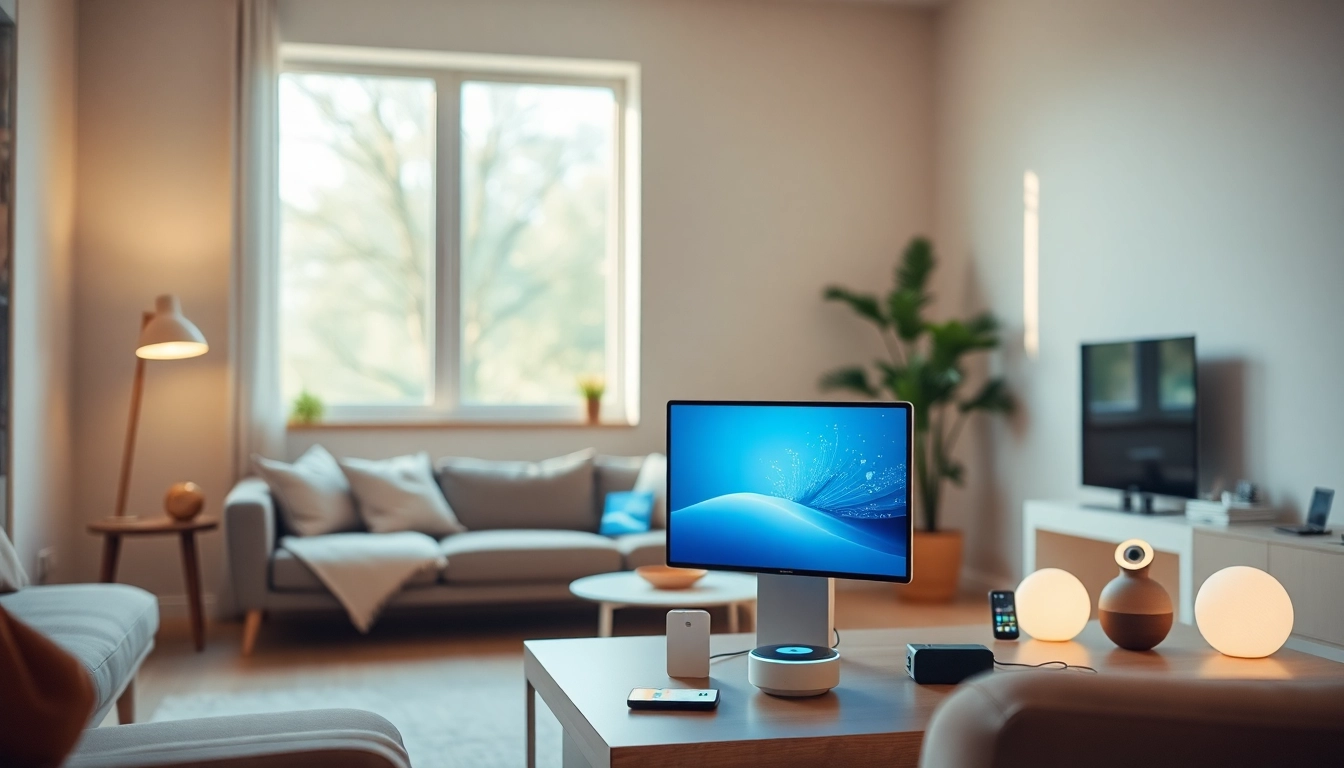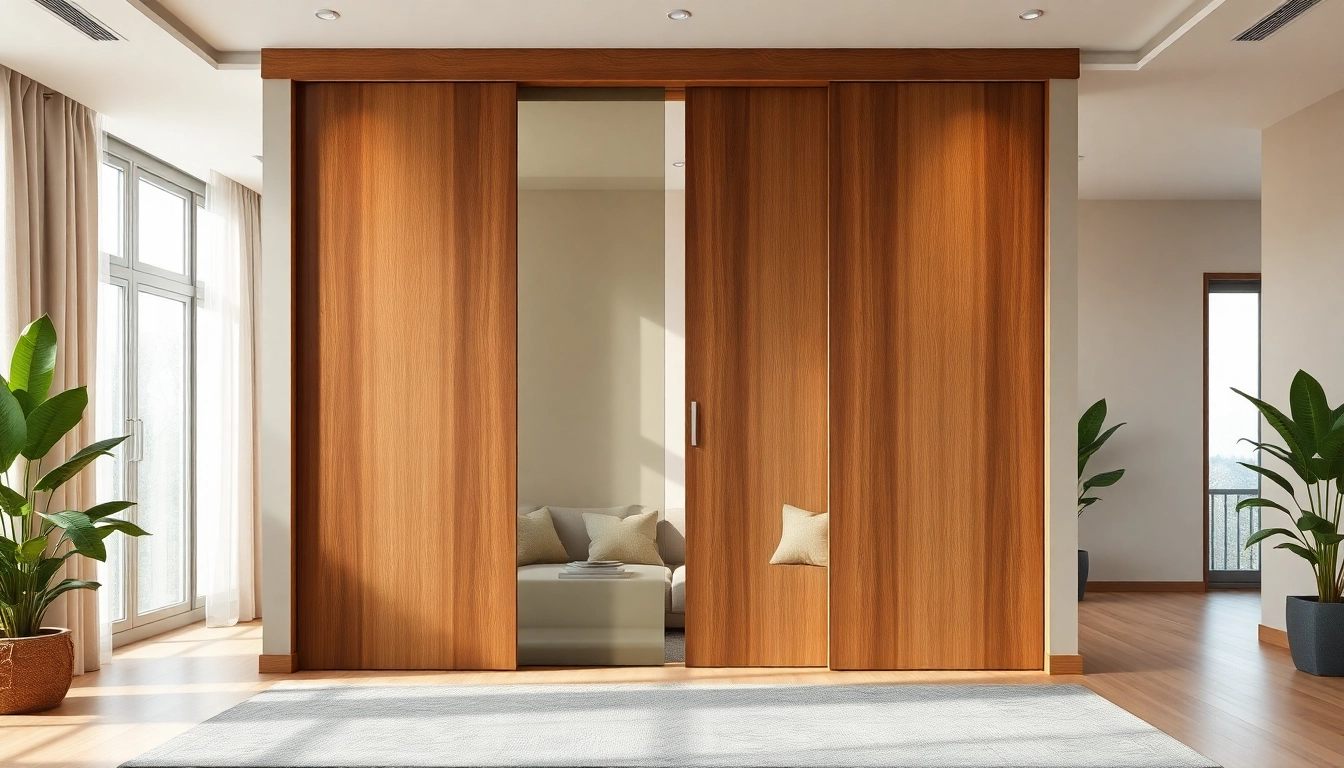Understanding Smart Home Gadgets
What Are Smart Home Gadgets?
Smart home gadgets refer to electronic devices that connect to a network to automate tasks and enhance the functionality of household systems. They utilize various wireless technologies, such as Wi-Fi, Bluetooth, or Zigbee, to communicate with each other and the central hub, enabling users to control multiple systems through smartphones or voice commands. Examples include smart lights, smart thermostats, security cameras, and smart speakers, each designed to improve efficiency, convenience, and security in modern homes.
Benefits of Smart Home Technology
The advantages of implementing smart home technology are numerous. Primarily, they offer enhanced convenience by allowing users to control various home functions remotely via smartphones or voice commands, resulting in a highly efficient lifestyle. Additionally, they can lead to significant energy savings; for instance, smart thermostats can optimize heating and cooling based on usage patterns, reducing energy bills. Security is another benefit; features like smart locks and surveillance cameras enhance home security by providing real-time monitoring and alerts. Lastly, smart gadgets can provide a more sustainable lifestyle, enabling users to monitor energy use and interact with energy-efficient devices.
Key Features to Look For
When selecting the best smart home gadgets, consider several key features:
- Compatibility: Ensure devices work seamlessly with your existing home system, especially hubs like Amazon Alexa, Google Home, or Apple HomeKit.
- User-Friendly Interface: Look for devices with intuitive controls and easy setup processes.
- Security Features: Opt for gadgets that offer robust encryption and regular software updates to protect against breaches.
- Voice Control Capabilities: Devices that can be controlled by voice commands can enhance convenience tremendously.
- Automation and Scheduling: Look for options that enable customization of schedules for various functions to optimize energy consumption and security.
Top Best Smart Home Gadgets of 2023
Smart Speakers and Displays
Smart speakers and displays have rapidly become staple devices in modern households. Leading products include the best smart home gadgets like the Amazon Echo and Google Nest Hub. These devices serve numerous functions, including offering voice-controlled assistance through built-in AI like Alexa or Google Assistant, streaming music, and controlling other smart home devices.
New iterations of these devices come equipped with improved sound quality, more responsive microphones, and enhanced display features for better interactivity. Moreover, integration with various smart home devices allows for seamless automation, such as controlling lights, thermostats, and more from a single dashboard.
Smart Lighting Solutions
Smart lighting solutions, such as Philips Hue and LIFX, provide both functional and aesthetic upgrades to traditional lighting systems. These products allow homeowners to adjust brightness and color remotely, set lighting schedules, and even control lighting through voice commands. From energy efficiency to mood creation, smart lighting enhances the overall ambiance of a home.
The latest innovations include tunable white bulbs that adjust color temperature based on the time of day and integrations with various smart home hubs for standardized control. Dimmers and motion sensors also add layers of convenience, allowing for automatic adjustments to lighting based on occupancy.
Home Security Devices
Home security devices have advanced significantly, offering greater peace of mind for homeowners. Popular options include video doorbells, smart locks, and security cameras from brands like Ring and Arlo. These gadgets provide features such as live video feeds, motion detection alerts, and two-way audio, which allow homeowners to monitor their property from anywhere.
Some unique advancements also include facial recognition technology and integration with other smart devices for comprehensive security management. Smart locks offer keyless entry options, making it easier to grant access to trusted individuals while maintaining greater control over home security.
DIY vs Professional Installation
Pros and Cons of DIY Installation
DIY installation of smart home gadgets can be appealing for those who enjoy a hands-on approach and want to save on costs. The primary advantages include flexibility in timing, full control over the setup process, and significant cost savings compared to hiring professionals. Moreover, many products are designed for easy installation, making tasks approachable even for those without extensive technical skills.
However, there are drawbacks. Complications can arise if the setup process isn’t followed correctly, leading to connectivity issues or device malfunctions. Additionally, without proper expertise, integration with existing systems may be less efficient, potentially resulting in suboptimal performance.
When to Consider Professional Help
Opting for professional installation is advisable when dealing with complex networks or systems that interact with numerous devices. Security systems, for example, may require sophisticated setups to ensure all components communicate properly. Additionally, for homeowners who are not comfortable with technology or lack time for self-installation, hiring professionals can provide peace of mind and ensure optimal functionality. Technicians can also monitor for compatibility issues that may not be readily apparent, ensuring smooth operation of the entire smart home ecosystem.
Cost Comparisons
When considering installation methods, cost is a prominent factor. DIY installations often feature lower upfront expenses, typically limited to the purchase of the device and perhaps some basic tools. In contrast, professional installations come with labor costs, which can vary widely based on complexity and the company hired. A straightforward smart light setup may only cost the price of the bulbs, while extensive home security systems could incur fees reaching into the hundreds or even thousands, depending on the specific configurations and technology used.
Integrating Smart Gadgets with Home Networks
Creating a Seamless Smart Home Network
An effective smart home network is the backbone of any successful home automation system. The first step involves ensuring robust internet connectivity throughout the home, as a weak signal can disrupt operations and connectivity between devices. Mesh Wi-Fi systems are increasingly popular, providing wider coverage and improved connections for multiple devices across larger homes.
In addition to a strong Wi-Fi setup, ensuring compatibility among devices is crucial. Opting for devices within the same ecosystem, or those compatible with leading hubs, can simplify integration. Each device should be configurable to connect to your central hub, allowing comprehensive control from a single interface.
Choosing the Right Hub for Your Devices
Selecting the right hub is essential for optimizing the functionality of your smart home gadgets. Popular hubs include Amazon Echo, Google Nest Hub, and Apple HomePod, each offering different capabilities. Before choosing a hub, consider the types of devices you already own and future purchases. Some ecosystems may be more compatible with your existing devices than others.
A good hub will allow for seamless integration, provide a user-friendly control panel, and enable voice commands for additional ease of use. Choosing a hub that supports automation and app control can also increase efficiency in managing daily tasks.
Troubleshooting Common Connectivity Issues
As wonderful as smart home technology is, connectivity issues can still arise. Common problems include devices not responding, slow performance, or complete disconnection. Resolving these issues can often be straightforward:
- Check Power and Connections: Ensure devices are powered on and properly connected to the network.
- Restart Devices: Sometimes, simply rebooting devices or your router can fix connectivity problems.
- Update Software: Keeping devices updated with the latest software can resolve bugs that may hinder performance.
- Reconfigure Settings: If devices were moved or reconfigured, they may require re-pairing with the network or hub.
The Future of Smart Home Gadgets
Emerging Trends in Smart Technology
The landscape of smart home gadgets is continually evolving. Upcoming trends indicate a shift toward deeper integration of artificial intelligence (AI) and machine learning to enhance user experience. Devices that learn user preferences can anticipate needs and offer predictions based on behavior, streamlining automation processes further.
Another trend is the growing emphasis on multi-device interoperability. Manufacturers are recognizing the importance of devices working together efficiently, leading to more solutions that transcend singular ecosystems. Privacy and security will remain paramount, pushing for innovations that prioritize user safety without sacrificing usability.
Sustainability in Smart Homes
As the world becomes increasingly aware of environmental concerns, sustainability has risen to the forefront of smart home design. Smart gadgets are now focusing more on energy efficiency, with advancements aimed at reducing water and electricity consumption. Devices that monitor usage in real-time and optimize performance based on demand will become essential in homes seeking energy-efficient solutions.
Recycling programs and energy certifications are also becoming increasingly important criteria for consumers when choosing smart home products. This trend towards sustainability yields numerous benefits while promoting a greener, more responsible approach to technology in our daily lives.
Predictions for the Next Five Years
Looking ahead, the smart home industry is poised for substantial growth. Market analysts predict that smart home devices will reach billions of users globally, driven by increasing consumer demand for convenience and security. We can expect to see innovations tailored to user-centric design, emphasizing enhanced AI personalization across devices.
Furthermore, advancements in energy storage solutions and renewable energy technologies will integrate smart modules that help homes maximize efficiency while being eco-friendly. Overall, the next five years will likely see smart homes transitioning from a luxury convenience to a standard feature in modern living.


